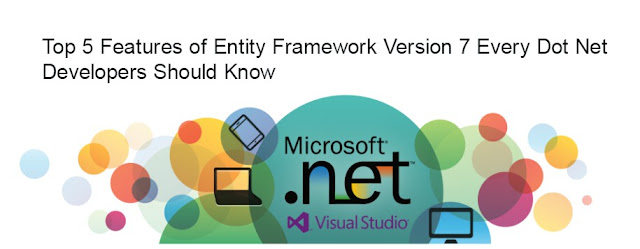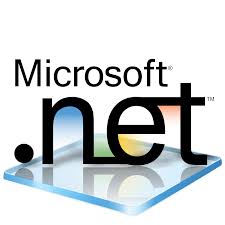Top25 ASP.NET Interview Questions - FAQ | Crack the Interview Easily
Complete MicrosoftDot Net Topics – PDF Download
1. What is ASP.Net?
It is a framework developed by Microsoft on which we can
develop new generation web sites using web forms(aspx), MVC, HTML, Javascript,
CSS etc. Its successor of Microsoft Active Server Pages(ASP). Currently there
is ASP.NET 4.0, which is used to develop web sites. There are various page
extensions provided by Microsoft that are being used for web site development.
Eg: aspx, asmx, ascx, ashx, cs, vb, html, XML etc.
2. What’s the use of
Response.Output.Write()?
We can write
formatted output using
Response.Output.Write().
3. What is caching?
Caching is a technique used to increase performance by
keeping frequently accessed data or files in memory. The request for a cached
file/data will be accessed from cache instead of actual location of that file.
4. What is Cross Page
Posting?
When we click submit button on a web page, the page post the
data to the same page. The technique in which we post the data to different
pages is called Cross Page posting. This can be achieved by setting POSTBACKURL
property of the button that causes the
postback. Findcontrol method of PreviousPage can be used to get the posted
values on the page to which the page has been posted.
5. What is
RedirectPermanent in ASP.Net?
RedirectPermanent
Performs a permanent redirection from the requested URL to the specified URL.
Once the redirection is done, it also returns 301 Moved Permanently responses.
6. What are the advantages of the code-behind feature?
The code-behind feature of ASP.NET offers a number of
advantages:
Makes code easy to understand and debug by separating
application logic from HTML tags
Provides the isolation of effort between graphic designers and
software engineers
Removes the problems of browser incompatibility by providing
code files to exist on the Web server and supporting Web pages to be compiled
on demand.
7. What is an ASP.NET
Web Form?
ASP.NET Web forms are designed to use controls and features
that are almost as powerful as the ones used with Windows forms, and so they
are called as Web forms. The Web form uses a server-side object model that
allows you to create functional controls, which are executed on the server and
are rendered as HTML on the client. The attribute, runat="server",
associated with a server control indicates that the Web form must be processed
on the server.
8. What is IIS? Why
is it used?
Internet Information Services (IIS) is created by Microsoft
to provide Internet-based services to ASP.NET Web applications. It makes your
computer to work as a Web server and provides the functionality to develop and
deploy Web applications on the server. IIS handles the request and response
cycle on the Web server. It also offers the services of SMTP and FrontPage
server extensions. The SMTP is used to send emails and use FrontPage server
extensions to get the dynamic features of IIS, such as form handler.
9. What is Query String?
What are its advantages and limitations?
The Query String helps in sending the page information to
the server.
The Query String has the following advantages:
Every browser works with Query Strings.
It does not require server resources and so does not exert
any kind of burden on the server.
The following are the limitations of Query String:
Information must be within the limit because URL does not
support many characters.
Information is clearly visible to the user, which leads to
security threats.
10. What is the
difference between authentication and authorization?
Authentication verifies the identity of a user and
authorization is a process where you can check whether or not the identity has
access rights to the system. In other words, you can say that authentication is
a procedure of getting some credentials from the users and verify the user's
identity against those credentials. Authorization is a procedure of granting
access of particular resources to an authenticated user. You should note that
authentication always takes place before authorization.
Quick Links:
11. Differentiate
globalization and localization.
The globalization is a technique to identify the specific
part of a Web application that is different for different languages and make
separate that portion from the core of the Web application. The localization is
a procedure of configuring a Web application to be supported for a specific
language or locale.
12. What is a Cookie?
Where is it used in ASP.NET?
Cookie is a lightweight executable program, which the server
posts to client machines. Cookies store the identity of a user at the first
visit of the Web site and validate them later on the next visits for their
authenticity. The values of a cookie can be transferred between the user's
request and the server's response.
13. What is the
default timeout for a Cookie?
The default time duration for a Cookie is 30 minutes.
14. How does a
content page differ from a master page?
A content page does not have complete HTML source code;
whereas a master page has complete HTML source code inside its source file.
15. Explain how
Cookies work. Give an example of Cookie abuse.
The server tells the browser to put some files in a cookie,
and the client then sends all the cookies for the domain in each request. An
example of cookie abuse is large cookies affecting the network traffic.
16. What are Custom
User Controls in ASP.NET?
The custom user controls are the controls that are defined
by developers. These controls are a mixture of custom behavior and predefined
behavior. These controls work similar to other Web server controls.
17. What do you
understand by aggregate dependency?
Aggregate dependency allows multiple dependencies to be
aggregated for content that depends on more than one resource. In such type of
dependency, you need to depend on the sum of all the defined dependencies to
remove a data item from the cache.
18. How can you
dynamically add user controls to a page?
User controls can be dynamically loaded by adding a Web User
Control page in the application and adding the control on this page.
19. What type of
code, client-side or server-side, is found in a code-behind file of a Web page?
A code-behind file contains the server-side code, which
means that the code contained in a code-behind file is executed at the server.
20. What is Role-based
security?
In the Role-based security, you can assign a role to every
user and grant the privilege according to that role. A role is a group of
principal that restricts a user's privileges. Therefore, all the organization
and applications use role-based security model to determine whether a user has
enough privileges to perform a requested task.
Best Dot NetTraining Institute in Chennai
21. What is the use of
PlaceHolder control? Can we see it at runtime?
The PlaceHolder control acts as a container for those
controls that are dynamically generated at runtime. We cannot see it at runtime
because it does not produce any visible output. It used only as a container.
22. How can you
enable impersonation in the web.config file?
To enable impersonation in the web.confing file, you need to
include the <identity> element in the web.config file and set the
impersonate attribute to true as shown in the following code snippet:
<identity impersonate = "true" />
23. Which method has
been introduced in ASP.NET 4.0 to redirect a page permanently?
The RedirectPermanent() method added in ASP.NET 4.0 to
redirect a page permanently. The following code snippet is an example of the
RedirectPermanent() method:
RedirectPermanent("/path/Aboutus.aspx");
24. What is
ViewState?
The ViewState is a feature used by ASP.NET Web page to store
the value of a page and its controls just before posting the page. Once the
page is posted, the first task by the page processing is to restore the
ViewState to get the values of the controls.
25. Why do you use
the App_Code folder in ASP.NET?
The App_Code folder is automatically present in the project.
It stores the files, such as classes, typed data set, text files, and reports.
If this folder is not available in the application, you can add this folder.
One of the important features of the App_Code folder is that only one dll is
created for the complete folder, irrespective of how many files it contains.



Comments
Post a Comment